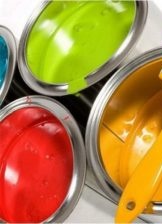Composition and technical characteristics of paint MA-15, instructions for use
In the field of repair and construction, water-based and acrylic paints are often used. They dry quickly, do not contain toxic components and have almost no smell. But oil formulations have a strength advantage. MA-15 paint is used to paint metal, wood, brick and concrete surfaces. It contains vegetable oils and natural pigments.
Composition and characteristics of paint
Composition of the MA-15:
- drying oil;
- pigments;
- desiccants that accelerate drying.
In the production, natural or combined drying oil is used. The following dyes are added to the enamel: white, chromium oxide, red lead, yellow ochre, mummy.
MA-15 Bio paint contains biological additives that protect the surface against fungi, viruses and bacteria. Characteristics of the compositions:
- consumption depends on the absorbency of the surface - more paint will be needed for painting wood than for brick;
- primer saves consumption - one layer is applied with a primer, two layers are needed without a primer;
- drying time depends on environmental conditions - in practice, the paint dries at least 4 hours, at most - 120 hours, and the properties can be fully assessed 5 days after painting.
MA-15 after drying withstands temperatures from -45 to + 60 degrees. In temperate climates, subject to application and operating rules, the minimum life of a two-coat coating is 1 year.
Features
The detailed parameters are indicated in the certificate provided by the manufacturer. Main Features:
| Property | The description |
| Surface | Homogeneous, smooth |
| Volatility percentage | 12 |
| Percentage of film-forming substances | 26 |
| Grinding depth | 90 micrometers |
| Viscosity | 64-140 |
| Concealment power | 45-210 grams per square meter |
| Drying period | 24 hours |
| Hardness | 0.05 relative unit |
| Light fastness (conditional) | 2 hours |
| Moisture resistance (with constant exposure to water flow) | 30 minutes |
| Layer thickness | 25-30 micrometers |
| Consumption | 55-240 grams per square meter |
The parameters are calculated at a temperature of + 19 ... + 25 degrees. Coverage and viscosity vary within the stated range depending on the colorant.
Apps
MA-15 is suitable for indoor and outdoor use. The composition is covered with brick and concrete walls, as well as outbuildings and garages.
Advantages and disadvantages
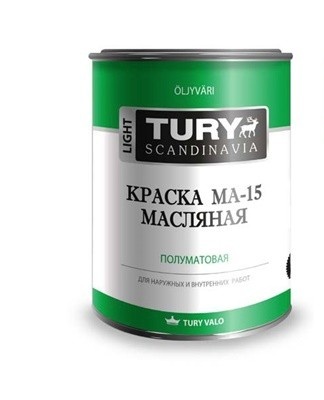
The composition is ready to use and adapts well. MA-15 paint is not suitable for floor painting.
Work instructions
Before you start staining, prepare the surface:
- remove the old coating;
- emery cleaned;
- large cracks and potholes are putty.
For better adhesion, it is recommended to coat the surface with a glyphthalic or alkyd primer. GF-021 primer is suitable for wood and metal surfaces - one coat of primer with VL-02 anti-corrosion property. The wooden surfaces are also coated with a special primer with insect and mold protection.
MA-15 paint is applied on a completely dry surface or after the primer layer has completely dried. The mass is thoroughly mixed and diluted with a solvent if necessary. For MA-15 turpentine, white spirit and nefras C4 155/200 are suitable.
The prepared composition is applied with a brush or roller. The permissible air temperature during operation is + 5 ... + 35 degrees, the maximum humidity is 80 percent. It is recommended to work in a ventilated place. Cool air will also speed up the drying of the coating.
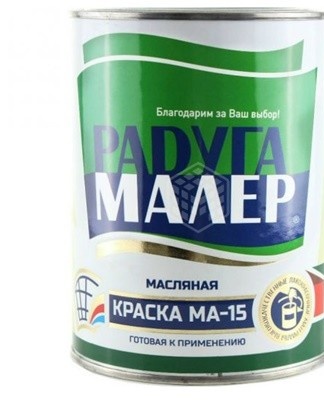
Precautionary measures
MA-15 paint is produced according to the national standard - GOST 1503-71. It does not contain toxic substances and is approved for use in hospitals, schools and kindergartens, public institutions. After drying, the composition is harmless, but when staining, safety measures should be observed:
- wearing gloves;
- ventilate the room;
- do not leave the pot in the sun and near the fire;
- leave windows open after staining;
- wipe brushes and rollers with white spirit.
Store paint in a tightly closed container in a dry, dark place.
How to remove an old diaper
Removing old paint is easier than removing fresh paint.Wet droplets will spread across the surface, so it's best to let them dry. You will need thinner and a blade to clean it.
Linoleum
Dried stains are heated or rubbed with turpentine and then scraped off with a razor blade. The solvent should be used with care. If you pour more than necessary, the pattern on the coating will be erased with the paint. After removing stains, linoleum is wiped with water and floor cleaner or soda.
Clothes
When cleaning the fabric, there is a problem with the removal of ink and traces of it.
How to clean dry stains:
- scrape off the top layer with a blade;
- sponge the rest of the paint with a cotton soaked in solvent;
- wipe off the softened oil particles with a clean disk;
- treat dark streak with ammonia, dish detergent, or heated glycerine.
The last step is regular washing.
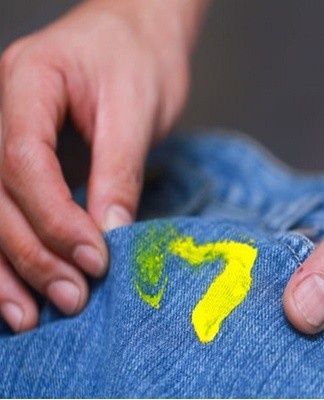
Oil paint finish
A durable and smooth coat of paint is suitable for the base for subsequent finishing work. The strength of the old coating is checked - carried out on the surface with a spatula. Chipping means it won't withstand the effects of putty or plaster. Therefore, the old finish must be removed.
Before starting work, a solid painted surface is prepared: it is treated with a metal brush and cleaned with soapy water, which is washed off with clean water.
Plaster
Features of plastering over paint:
- permissible thickness of the sand-cement coating layer - 3 centimeters, gypsum - 4 centimeters;
- reinforcement is needed under a layer of plaster thicker than one centimeter;
- for better adhesion, the smooth surface of the paint is sanded;
- be sure to apply a deep penetration floor, and under the gypsum plaster - a second layer of concrete contact composition for painted surfaces;
- under the cement plaster on the deep floor, tile adhesive is applied for difficult surfaces.
To improve adhesion, after sanding, strips of paint are removed with an ax or a spatula 5 centimeters wide and at intervals of 10 centimeters over the entire painted wall.
putty
One of three types of primer is applied to a clean wall: for painted surfaces, quartz or deep penetration. If the surface is covered with cracks or a putty layer should be more than five centimeters, a reinforcing mesh is installed. The cracks are first covered with a wide spatula, then the putty is applied and leveled over the entire the surface.
Tile
It is more difficult to fix the tile on smooth paint, since it is heavier than putty or plaster, it can slip already at the installation stage. Before work, carefully prepare the surface:
- create roughness using emery or a grinder, notches with an ax;
- degreased with alcohol;
- coated with a deeply penetrating primer, filling cavities and rough spots well.
The tile is laid on glue for complex surfaces or PVA glue is added to the cement mortar.
water emulsion
The ceiling and the upper parts of the walls are painted with water-based paint over oil paint, as they are less susceptible to mechanical damage. In places of contact with furniture, subject to frequent friction, the coating fades.
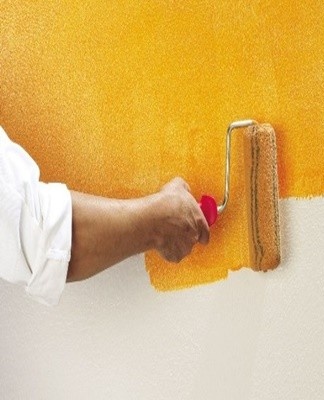
The surface is also washed and sanded. Water-based compositions are firmly fixed on the drying oil. But the disadvantage of this method is an unpleasant smell.
Safe primers are used under water-based paint:
- acrylic;
- for the painted surface.
The water-based coating should be applied in three coats, as surface absorption is reduced. The color of the old paint will be blocked by thick compounds.
Wallpaper collage
Before gluing, the walls are prepared according to the usual scheme:
- wash, putty potholes, clean the glossy surface layer with emery or a grinder with a grinding attachment;
- notches are made at intervals of 20 centimeters;
- cover with deep or ordinary soil with the addition of PVA glue.
You can stick on the walls after 24 hours, when the primer is dry. Better to use textured vinyl or non-woven wallpaper. PVA is also added to wallpaper paste.
Other MA Series Paints
Types of oil coatings differ in composition and purpose.
iron red lead
The paint is intended for metal coatings and structures under load: roofs of buildings, garages, pipes, radiators.
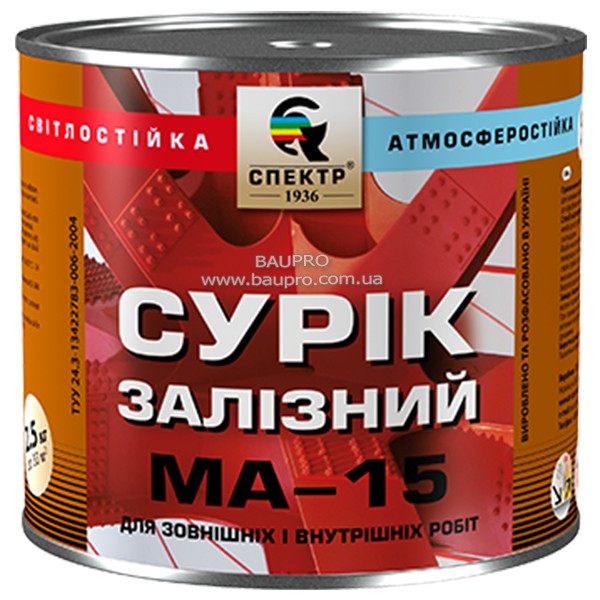
The color is red and red-brown.
MA-015
A thick paste of different colors is diluted 30 percent with linseed oil.
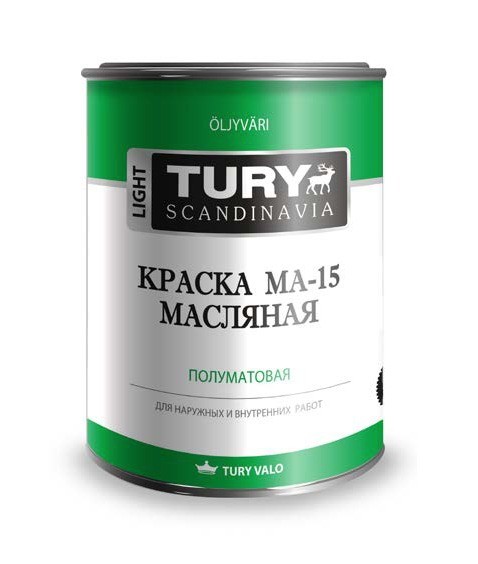
The properties of the paint are similar to MA-15, and it is also diluted with turpentine.
MA-0115
The thick grated variety contains earthy dyes, acrylic, vinyl and is also diluted with linseed oil.

Paint is used for painting park benches, gazebos, fences.
Ma-22
This type of oil paint contains desiccants and dries quickly.
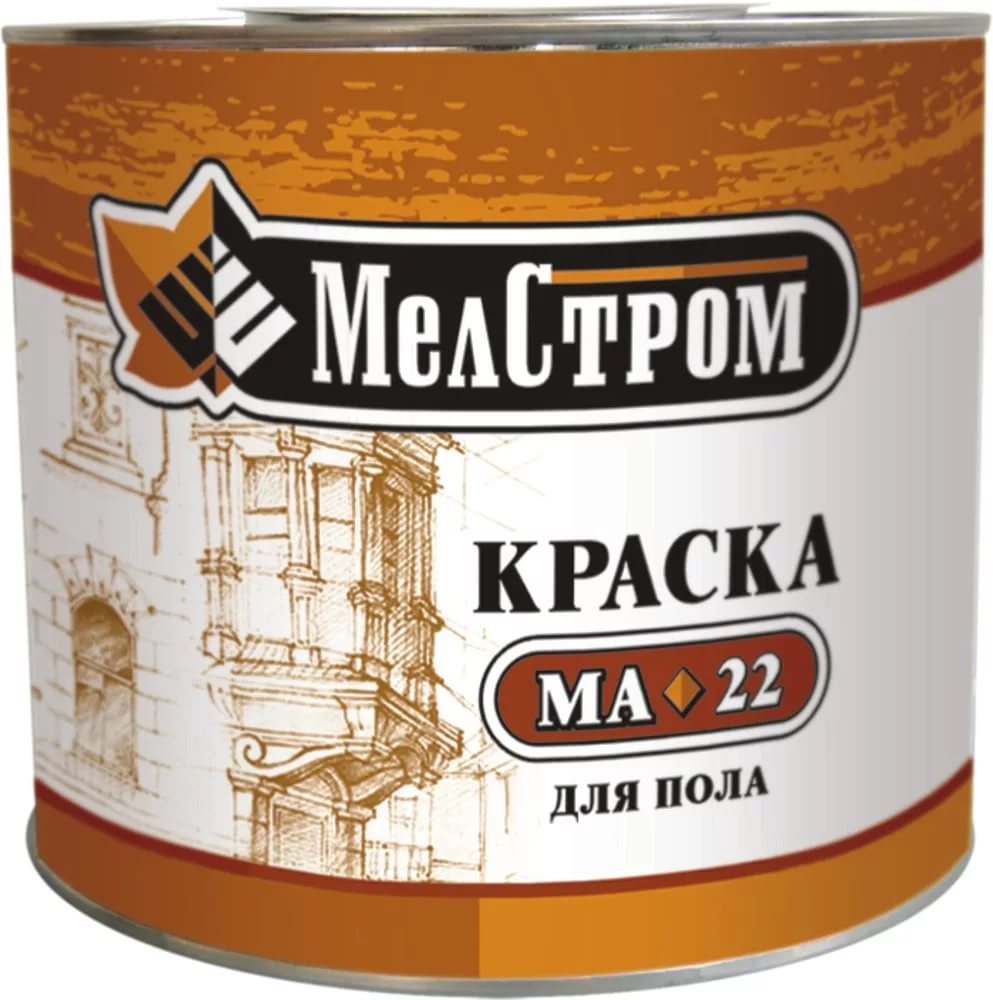
It is recommended to apply the composition in two layers.
Ma-25
The variety of vegetable oil paints has limited resistance to weathering.
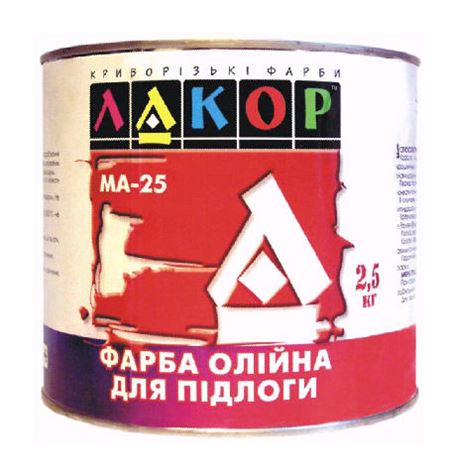
MA Series paints are inexpensive, durable and safe when used properly. Their low cost will reduce repair costs.



